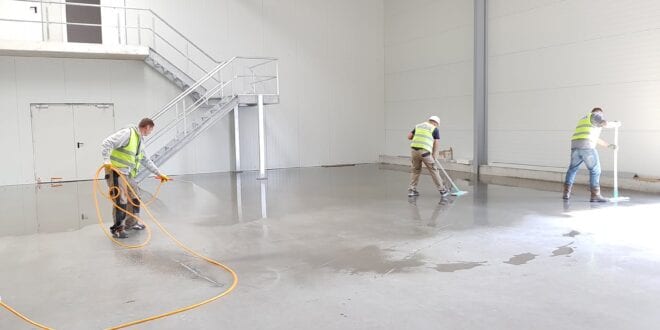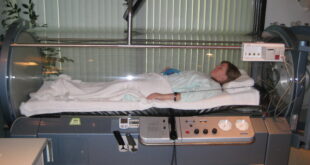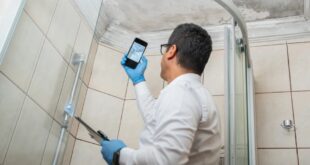As we prepare to move back into commercial buildings on a large scale after global lockdowns following the lethal outbreak of SARS-CoV-2 that causes COVID-19, sanitization and improved air quality take center stage.
Of course, not all buildings have been vacated during lockdown, or shut-down as it is sometimes referred to. Some people have had to continue working through the pandemic with at least some areas of buildings in use.
At the United Nations headquarters in New York, for example, the medical service, broadcast rooms, and the operations center have been in use right through the pandemic, with essential staff unable to work from home. While these areas have been thoroughly cleaned after use and sometimes also before, a detailed plan for infection control is being developed before more staff members return to work. The same is happening all over the US and, indeed, the world.
Additionally, buildings are frequently decontaminated or “deep-cleaned” when people using the building have tested positive for the virus.
In NYC, irrespective of which company or organization controls cleaning and maintenance, the measures followed are generally the same as those taken at the UN HQ buildings that are cleaned by the Facilities and Commercial Activities Services (FCAS).
Sanitization in UN HQ Buildings
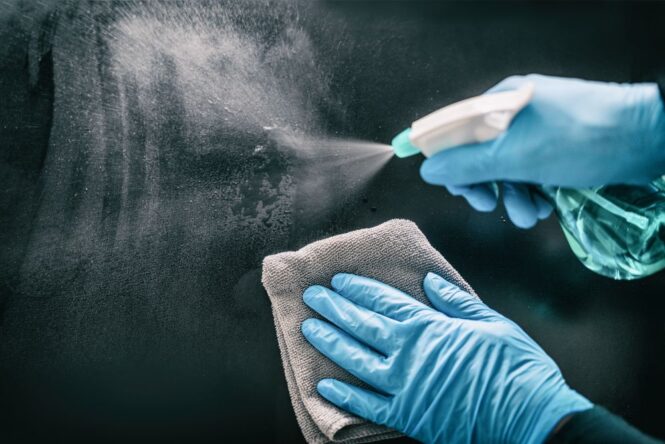
According to the UN Secretariat, cleaning of UN HQ buildings has focused on the occupied floors and areas in use during the pandemic. Measure have included:
- An increase in the frequency of trash collection.
- More frequent cleaning of high-use surfaces including escalator handrails, elevator buttons, and door handles.
- Upgrade to hospital-strength disinfectant used to spray surfaces.
- The use of flexible workspaces that enable social distancing. All desk surfaces are disinfected by wiping before use. This cleaning regime is also used in meeting rooms.
- The Secretariat has also increased hand sanitizing stations so that there are now 142 dispensers available in the HQ building areas currently being used, an increase of 40. Because sanitizer is in short supply in the US (and in fact worldwide), they do though recommend washing hands in soap and water for at least 20 seconds instead.
In general, the UN Secretariat says, ordinary disinfectant is sufficient to clean work areas. They don’t believe walls and soft furnishing need cleaning unless they are soiled. They also do not recommend “fogging” with disinfectant.
Employees have been assured that there is no increased risk of contracting the virus in a shared workplace as long as physical distancing is practiced. As mentioned above, surfaces in work areas are disinfected.
Maintain Cleanliness
Clutter can easily pile up in offices and commercial spaces. Dirty surfaces and corners become breeding grounds for pests and germs, including coronavirus. For this reason, building managers should take steps to help maintain the cleanliness of all building areas.
With the help of professional cleaning service such as Albany Cleaning, you can maintain the cleanliness of your building. Find a commercial cleaning company with a good track record of exceptional performance and strong reviews.
Here are the important things to look for when hiring a professional to maintain cleanliness in your building:
- Offers complete office cleaning services
- Supplies all cleaning equipment and materials
- Has a dedicated cleaning management team
- Staff members are vetted, uniformed, and DBS checked
- Quality audits performed by hardworking area supervisors
- Flexible office cleaning in weekends and including out-of-hours
Remote Work Policies
Implementing ongoing remote work policies where feasible is essential to keep the number of people in the office building to a minimum. Incorporating equipment like a sweeper scrubber for regular cleaning can further enhance a safe working environment for those who need to be in the office. This not only helps in maintaining social distancing norms but also provides employees with the flexibility to work in a safer environment, where cleanliness is actively managed. Remote work has proven effective during recent global events, and its continued application, along with cleanliness measures like using a sweeper scrubber, can significantly reduce potential health risks in the workplace.
Employee Training
It’s important that employees undergo regular training in hygiene practices to ensure everyone’s health and safety. This includes understanding the importance of frequent handwashing, the correct way to sanitize workstations, and the proper use of personal protective equipment (PPE). Such educational initiatives help in fostering a culture of health awareness and proactive prevention.
Touchless Technology
The adoption of touchless technology within office spaces can be a game-changer. Equipping facilities with automatic doors, touchless faucets, and hands-free sanitizer dispensers minimizes the need to touch common surfaces. This technology is not just about convenience; it’s a practical approach to reducing contact points and the potential spread of germs. Investing in these innovations supports a healthier workplace and showcases a company’s dedication to modern, safety-first operations.
Ventilation and Air Quality in Buildings

It is now a well-known fact that COVID-19 (the disease) is spread by droplets produced when infected people cough or sneeze or even shout or scream. These usually fall onto surfaces that are within one or two meters of the person coughing or sneezing. Additionally, the affected person might transmit the virus by touching surfaces with their hands, which is why thorough cleaning with a reliable disinfectant is so important.
Even though outdoor areas, which offer natural ventilation, are less of a risk than indoor areas (particularly where social distancing isn’t possible), changing the airflow in recirculated air systems doesn’t alter the risk factor.
The UN HQ buildings have sophisticated ventilation systems with filtering and airflow capabilities that prevent the spread of COVID-19. But this isn’t the case in all buildings, and it is vital that buildings are made as resilient as possible to avoid the risks of the coronavirus infection affecting occupants. With this in mind, the American Society of Heating, Refrigerating and Air-Conditioning Engineers (ASHRAE) has addressed possible engineering interventions that can be applied to minimize the spread of this deadly disease through the air inside buildings.
More specifically, ASHRAE has issued two advisory statements relating to reducing the dangers of pathogen transmission through the air that circulates through heating, ventilation, and air-conditioning (HVAC) systems. Their focus is, of course, the most recently identified pathogen, SARS-CoV-2.
- Because SARS-CoV-2 is airborne, it needs to be controlled. The advice from ASHRAE is to make the necessary changes to HVAC systems to reduce airborne exposures.
- Proper engineering of filtration and ventilation can reduce the spread of the airborne virus in HVAC systems, says ASHRAE. The Society warns that if spaces are not air-conditioned, they can cause thermal stress that might be life-threatening. They also warn against disabling HVAC systems in an attempt to reduce transmission of the deadly virus.
While ASHRAE is still actively looking for solutions that will help to mitigate airborne transmission of SARS-CoV-2, engineering firms that specialize in HVAC can help to make buildings more resistant to the virus, and in this way help to save lives.
How to Check the Air Quality in Your Building
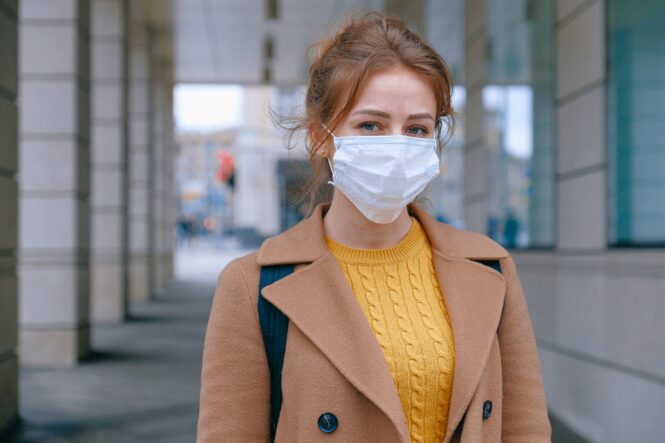
The best way to ensure that your building is COVID-19 resilient is to have a specialist identify vulnerable areas and then advise how to reconfigure the HVAC and/or ventilation system to eliminate health hazards.
If you can, find a Mechanical, Electrical, and Plumbing (MEP) engineering firm in your area or city that offers COVID-19 Resilient Building Reports. An experienced firm like New York Engineers will identify the weak spots in the building, detect any health hazards, and find ways to eliminate these by improving air purification and air filtering measures and/or by reconfiguring the entire HVAC system.
Increasing the outdoor air in a ventilation system is considered good practice for preventing transmission of the virus. Even though this does result in a higher workload for the equipment, there are ways to compensate according to ASHRAE guidelines.
Air filters should be replaced with the most efficient units, for instance, MERV 13 or higher. These are filters with a minimum efficiency reporting value that ranges from 1 to 16. The higher the MERV rating the smaller the particles it can handle.
Ultraviolet germicidal irradiation (UVGI) should be used with high-efficiency air filters so that filtration traps the virus particles and the UVGI destroys their DNA. There are different UVGI methods and your MEP engineer will recommend the best option for the building.
Additionally, keeping relative humidity between 40% and 60% minimizes the transmission of bacteria and viruses.
In any case, before any building is reopened after shut-down due to COVID-19 it is highly recommended that the building is thoroughly inspected by a team of HVAC engineers. In the meantime, stay safe.
Building inspections are important to help reduce the risk of coronavirus in your building. Aside from the standard inclusions in building inspections, assessing and implementing safe and healthy measures are crucial during this new normal.
Takeaways
Cleanliness is vital to maintaining public health and safety inside buildings. Maintaining proper ventilation and checking air quality are highly recommended. Make sure to follow the tips shared above to avoid contracting and transmitting coronavirus and other disease-causing microorganisms.
 Imagup General Magazine 2024
Imagup General Magazine 2024
